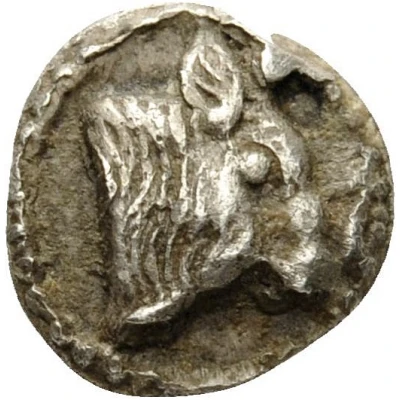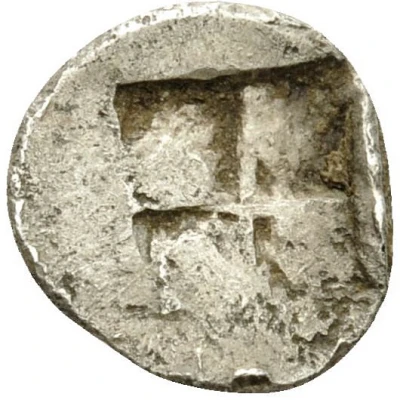


© Nomos AG
Hemiobol 490 BC - 480 BC
| Silver | 0.36 g | 7.0 mm |
| Issuer | Akanthos (Macedon) |
|---|---|
| Type | Standard circulation coin |
| Years | 490 BC - 480 BC |
| Value | Hemiobol (1⁄12) |
| Currency | Drachm |
| Composition | Silver |
| Weight | 0.36 g |
| Diameter | 7.0 mm |
| Shape | Round (irregular) |
| Technique | Hammered, Incuse |
| Demonetized | Yes |
| Updated | 2024-10-10 |
| Numista | N#186373 |
|---|---|
| Rarity index | 94% |
Reverse
Quadripartite incuse square
Interesting fact
The Hemiobol coin was used as a form of currency in ancient Greece, specifically in the city-state of Akanthos, which is now modern-day Greece. The coin's name "Hemiobol" comes from the Greek words "hēmi-" meaning "half" and "bolos" meaning "throw", which refers to the coin's value being equal to half the value of a full unit of currency, called a "bolos". This coin was made of silver and weighed 0.36 grams, which was a significant amount for a coin at that time. Despite its small size, the Hemiobol coin played an important role in the economy of Akanthos and surrounding regions, and its use can be traced back to the 5th century BC.